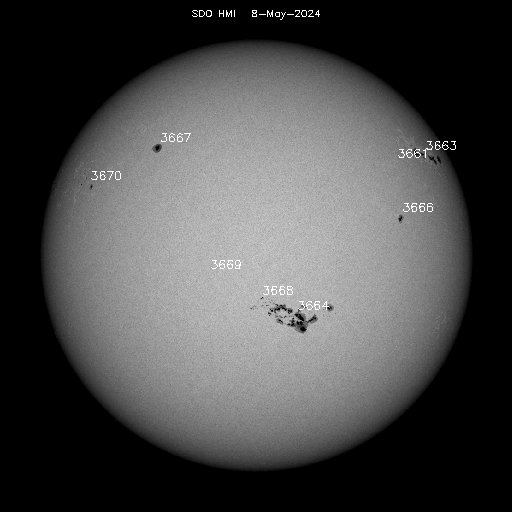On Sunday 14th May 2017 the International Space Station ISS crossed the disk of the Sun as seen from the European Space Astronomy Center, ESAC.
ISS crosses the Sun
The above image is a superposition of thirty-eight consecutive frames captured on 14th May at 09:06:04 (24fps, Nikon D3100). The black silhouette is seen against the Sun photosphere background. The ISS is the largest man-made object in orbit, spanning the size of a football pitch. Despite its large size, it orbits the Earth at a distance of approximately 400 km, therefore looking tiny to telescope fanatics. Depending on the ISS orbit altitude and the Sun elevation over the horizon, its apparent angular size to the observer varies. That is clearly seen in the composite images below.
Comparison between two transits (Jan 2017 - May 2017)
In the image two ISS transits are placed side-by-side: the left one on Jan 2017, when the space station was flying at a slant range of 452km. The right one, on May 2017, at a slant of 930km (see
ISS transits Moon over ESAC 14Jan 2017). The outcome is dramatic, as the resolving of the ISS body drops by half at a double slant range. Not only that, the image quality is considerably different. As the light crosses more layers of Earth's atmosphere, the 'seeing' worsens and the image turns less crisp (right image). On the other hand, an increased crossing time allows for more frames to be captured (38 versus 13). The phenomena is extremely fast in any case: the ISS took only 0.56 and 1.6 seconds to cross the Moon and Sun disks. Therefore careful location/timing planning was required to successfully capture it.

ISS-Sun crossings are common, but a crossing from a specific location on Earth is not. The observer, the ISS and the Sun must be precisely aligned. An ESAC group composed of Manuel Castillo and Miguel Perez Ayucar set up two telescopes with two Canon reflex cameras and a Nikon, in the back of the A-building, in the early morning. The ISS cannot be spotted before the crossing with solar telescopes, so the observation is done with a clock in hand, and basically in the blind. Everything was right at the precisely expected time. The geometry is so particular that the ground path where observers can see the event is only a few hundred meters wide. Therefore careful planning of the observation must be performed. The station flies at ~27000km/h therefore the transit takes is a blink of an eye to be complete.








